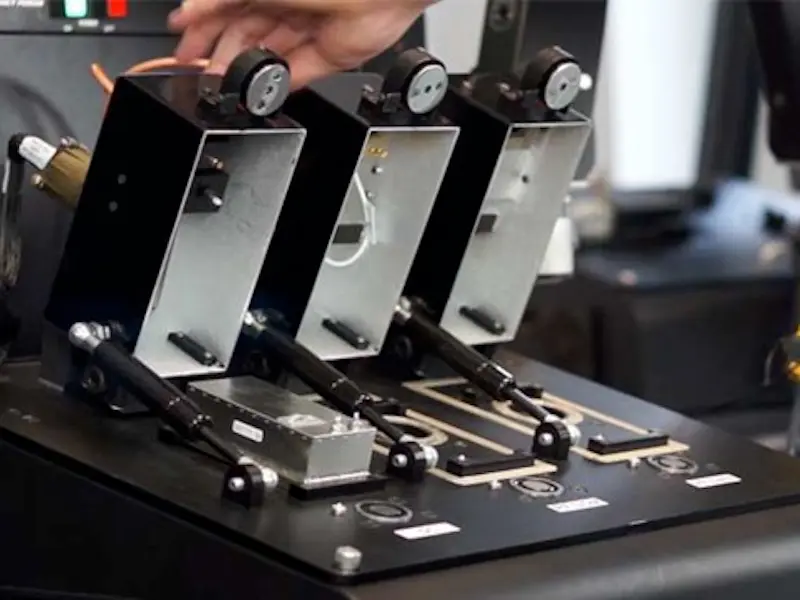- Automated Test Equipment (ATE) is used to test devices and systems automatically.
- ATE improves speed, precision, and consistency in testing for a wide range of industries.
- Commonly utilized in electronics, semiconductors, automotive, and aerospace.
Automated Test Equipment (ATE) refers to systems or tools that are designed to automatically test and evaluate the functionality of devices, circuits, or systems. These machines help identify faults, validate designs, and perform quality assurance in various industries, particularly in electronics, semiconductor manufacturing, automotive, and aerospace sectors. ATE systems offer enhanced precision, speed, and reliability over manual testing methods, making them a crucial component in today’s tech-driven world.
What is automated test equipment (ATE)?
At its core, Automated Test Equipment is a system of hardware and software designed to perform tests on devices under various conditions, capturing test results automatically for analysis. In the context of electronics, ATE is commonly employed for testing printed circuit boards (PCBs), integrated circuits (ICs), and other critical components. These tests can be performance-oriented (e.g., signal integrity or power consumption) or focused on safety and compliance.

For example, in the semiconductor industry, ATE plays a key role in testing chips during and after manufacturing to ensure they meet required specifications before they are shipped to customers.
Automated Test Equipment has revolutionized industries by offering unparalleled speed, accuracy, and repeatability in product testing, ensuring that products are both safe and high-quality before they hit the market.
John Doe, Technology Expert
Also read: The fundamentals of automated systems
How ATE works
Automated Test Equipment systems consist of various components designed to simulate real-world operating conditions. Here’s a brief breakdown of the working components:
- Test head/instrument: These are the devices that connect to the unit under test (UUT). They carry out various tests such as voltage, current, and signal integrity checks.
- Test controller: The brain of the ATE system, the test controller sends instructions to the instruments, processes test data, and drives automated operations.
- Software interface: ATE systems rely heavily on software to automate the testing process. The software helps design test plans, analyze data, and interpret results. It can be customized depending on the industry or the specific requirements of the device being tested.
By coordinating these components, ATE systems can conduct a large number of tests in a fraction of the time it would take to perform them manually.
The integration of ATE in semiconductor testing is not only about improving efficiency but also about ensuring that every component can be trusted, from the first prototype to the final product.
Jane Smith, Semiconductor Industry Specialist
Also read: Test automation framework: Guidelines to help the test run
Key advantages of automated test equipment
The widespread use of ATE is driven by its clear advantages, making it indispensable in modern manufacturing and R&D. The main benefits of automated testing systems include:
- Speed: Automated test systems can complete tests at significantly faster speeds than manual methods, which is essential in high-volume production environments.
- Precision and accuracy: ATE reduces human error and provides highly accurate, repeatable results that can be essential for sensitive products like semiconductors.
- Cost efficiency: Although initial investments in ATE systems can be high, they help reduce labor costs and improve throughput, offering long-term savings and scalability.
- Scalability: As production volumes grow, ATE systems can be scaled up to meet the increased demand, enabling efficient testing at all stages of the manufacturing process.
- Flexibility: The adaptability of ATE allows it to be customized for a variety of products, making it useful in diverse industries such as automotive, aerospace, and telecommunications.

Also read: 7 benefits of automation every engineer should know
Types of automated test equipment
There are several different types of ATE systems, each suited to different testing requirements. Some of the most common types include:
- Functional test systems: These systems check the basic functionality of a product, verifying that it operates as intended.
- In-circuit testers (ICT): These test individual components on a PCB to ensure they are correctly placed and functional.
- Automated optical inspection (AOI): AOI systems use cameras to detect defects on the surface of a PCB or product, including missing components, misalignment, or soldering issues.
- Burn-in test systems: Used to stress-test products to identify defects or weak points by running them under extreme conditions, such as higher temperatures or voltages.
- Boundary scan test systems: These are particularly useful for testing the interconnections on PCBs, and they are often used when traditional probing methods are not feasible.
The importance of ATE in semiconductor manufacturing
Semiconductors form the backbone of modern electronics, from consumer devices to complex industrial machinery. Given the crucial nature of semiconductor chips in various devices, ensuring their proper functionality is of utmost importance. Automated test equipment plays a pivotal role in the semiconductor manufacturing process, where precision and reliability are non-negotiable.
In the semiconductor industry, ATE systems are used during various stages of production. From wafer testing to final chip evaluation, ATE ensures that each chip meets strict performance criteria. Additionally, ATE systems are used for in-circuit testing of semiconductor assemblies, ensuring that devices function correctly after integration into larger systems.
Why ATE is essential in modern manufacturing
- Increasing complexity of devices: As devices become more complex, the need for comprehensive testing increases. ATE systems are scalable and can adapt to testing new technologies, such as 5G, artificial intelligence (AI) systems, and advanced semiconductors.
- Growing demand for high-quality products: With consumers and industries demanding high-quality products, the precision and consistency of automated testing are crucial. ATE allows manufacturers to meet these demands by detecting defects early in the production process.
- Improved test coverage: Automated test systems provide greater coverage compared to manual testing, ensuring that more potential defects are identified.

Future of automated test equipment: Trends and innovations
The future of Automated Test Equipment looks promising, with emerging technologies shaping how these systems evolve. Here are some of the key trends to look out for:
- Artificial intelligence and machine learning integration: AI and machine learning are expected to play a larger role in ATE systems by improving test automation, analyzing test results, and predicting potential failures before they happen.
- Increased automation and robotics: Automation technologies, such as robotics, will allow ATE systems to perform more sophisticated tasks with greater accuracy and speed.
- Internet of things (IoT) testing: With the rise of IoT devices, ATE systems will need to evolve to handle the specific testing requirements of these interconnected systems.
- Advanced analytics for predictive maintenance: Advanced analytics tools integrated with ATE can help predict when machines need maintenance, improving uptime and reducing costs.
Automated Test Equipment is transforming how electronic devices are tested across industries. From semiconductors to consumer electronics, ATE ensures that products meet stringent quality standards, enhancing reliability and reducing human error. As technologies evolve, ATE will continue to advance, driving efficiency and innovation across industries.
ATE refers to systems that automatically test and evaluate devices, components, or systems for functionality and quality. It reduces human involvement, increases testing speed, and ensures precision in product validation.
ATE is used in industries like electronics, semiconductors, automotive, aerospace, and telecommunications, where high precision and testing reliability are essential for quality control.
ATE improves efficiency by automating repetitive tasks, reducing human error, increasing testing speed, and ensuring consistent, accurate results.
ATE ensures that semiconductor chips meet stringent performance and quality standards, reduces defects, and enhances the efficiency of manufacturing processes.
Yes, ATE systems are evolving to support the testing of IoT devices by providing the necessary flexibility, scalability, and coverage for these interconnected products.

